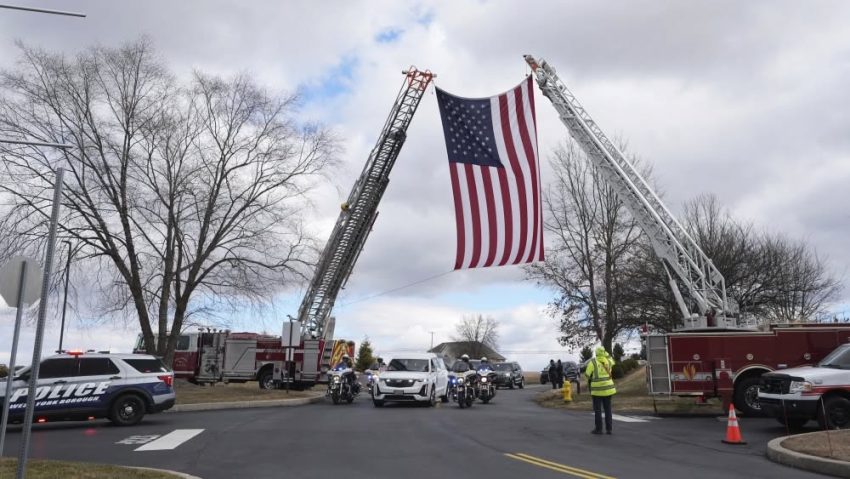The gun was empty. But in the chaos of a hospital ICU, under the hum of fluorescent lights and the smell of antiseptic, no one knew.
Diogenes Archangel-Ortiz, a 49-year-old man consumed by grief and mental anguish, entered the West York Medical Center ICU on a cold March morning. Clutched in his shaking hands was a handgun—later discovered to be unloaded. But in the charged atmosphere of the hospital’s trauma unit, no one had the luxury to guess. He pressed the weapon into the neck of an ICU nurse, 34-year-old Tosha Trostle, her pulse jumping beneath the barrel.
He didn’t scream. He didn’t make demands. Archangel-Ortiz stood silently, his jaw clenched, eyes dark with sorrow. Nurses and doctors froze. Administrators triggered an emergency lockdown. And within minutes, armed officers surrounded the unit, trying to assess a volatile situation through closed doors and scattered witness reports. A man with a gun, a hostage, and no visible escape plan.
Outside the ICU, a tense standoff unfolded. Officers gave orders through a loudspeaker, their voices echoing through hospital halls meant for healing, not war. Inside, Trostle barely breathed, her body rigid, brain racing. She later said she could feel the despair rolling off him—like he had nothing left to lose.
Archangel-Ortiz had lost his wife, Maria, to a prolonged illness just days earlier. Her death broke something in him, family members would later say. Her room had been just down the hall.
The situation exploded in seconds.
At 9:47 a.m., officers breached the ICU. What happened next would be pieced together from body cameras, ballistic reports, and shell casings. The moment the team entered, Archangel-Ortiz flinched. The gun moved. That was enough. A hail of gunfire—22 rounds in total—shattered the sterile silence of the ward.
Archangel-Ortiz collapsed instantly, struck multiple times. Trostle, remarkably, survived without a scratch—though she’d carry the trauma in her bones. She described the moment the man slumped against her, his body crumpling to the floor, one cold hand brushing her cheek as she pushed free. Her legs nearly gave out, but instinct carried her to cover.
The worst seemed over—until a cry of alarm echoed through the team.
West York Patrolman Andrew Duarte had been hit. Chaos erupted again as medics raced to his side, but it was too late. A single bullet had pierced his vest and struck a vital artery. He died on the scene, just 30 years old.
The investigation confirmed what officers already feared: Duarte had been killed by friendly fire. In the flurry of shots, one officer’s round struck the young patrolman—a tragic mistake in the fog of a desperate moment.
Still, the district attorney’s final report was clear: the blame lay solely with Diogenes Archangel-Ortiz. Though his gun was empty, it had been real. The threat had been real. The emotional terror inflicted on the staff, the impossible choice forced on responding officers, the deadly result—all were the direct consequence of his actions.
Andrew Duarte died a hero, shielding others, stepping into danger without hesitation. His colleagues mourned a brother-in-arms, a man known for his easy laugh and steady resolve. The community mourned a protector who had responded with courage in a moment of crisis.
Tosha Trostle, though physically unharmed, spent months recovering from the emotional toll. “I can still feel his hand,” she said in a later interview, her voice trembling. “Cold. Like the life had already left him before the bullet did.”
The ICU eventually reopened, the walls repaired, the blood scrubbed clean. But the echoes of that day lingered. A nurse who stared down death. A grieving man who crossed a fatal line. A patrolman who answered the call and paid the ultimate price.
The gun was empty—but no one knew. And in that terrible uncertainty, a hero fell.
Would you like me to format this into an article layout or provide a visual diagram of the incident’s timeline?

